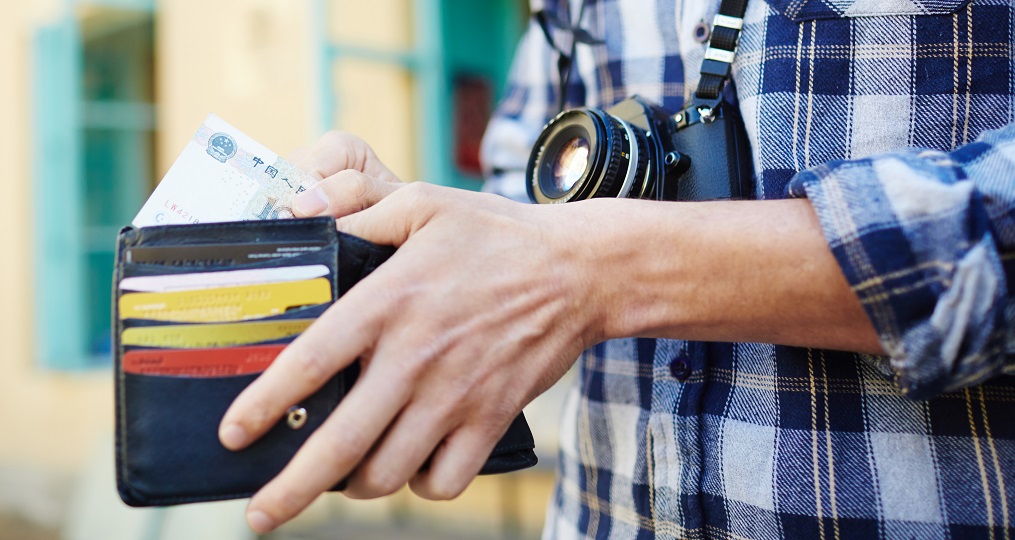Traveling abroad raises the question of how to pay for expenses and manage currency exchange. Here are some considerations for choosing the best payment method when traveling outside of the United States:
- Credit Cards
In most cases, a credit card that doesn’t charge any foreign transaction fees is the best way to pay for expenses while in another country. Most places you’ll visit abroad - including restaurants, stores and hotels - will accept credit card payments from major card issuers. Paying by credit card will also provide you with the current exchange rate at the time of payment, and if you have a rewards credit card, you’ll earn any cash back or points you normally would from card transactions.
If you do plan to use a credit card abroad, ensure the following before you begin traveling:
• No foreign transaction fees. Before using a credit card abroad, it’s important to first verify that the card does not charge foreign transaction fees. Some cards may charge a percentage of every transaction you make in a foreign country, which could really add up during your travels.
• Widely accepted. It’s also important to consider using a widely accepted credit card. Mastercard and Visa tend to be the most accepted cards, while cards like Discover and American Express might not be accepted by every merchant. If you do plan to use a Discover or American Express card abroad, it can be a good idea to contact the specific hotels and restaurants you plan to visit to ensure your card will be accepted. Bringing a back-up credit card could be a good idea as well.
If your current credit card charges foreign transaction fees or you think it might not be widely accepted overseas, you may consider taking out a new credit card that is more geared toward international travel. Just be sure to weigh all of your options so you can find a card that’s the best fit for you.
- Local Currency
You may also consider obtaining cash in the local currency of the country you’ll be traveling in. Not only will local currency be accepted in most places you visit there, but it can also serve as a backup payment method in the event your credit card is not accepted. Should you end up stranded on the side of the road or find your credit card blocked for security reasons, having some bills in your pocket will undoubtedly provide some peace of mind. Even if you plan to use a credit card as your main form of payment, it can’t hurt to have some local currency when you travel.
There are some downsides to using cash that you should keep in mind. For instance, the exchange rate can be high depending on where you are traveling to, and multiple ATM withdrawals can result in significant fees. Withdrawing larger amounts can help reduce fees, but it’s important to keep in mind that carrying a lot of cash can be a security concern.
If you’re thinking about using cash abroad, here are some tips to consider:
• Refunded ATM fees. Look for a debit card that will refund ATM fees, so you can minimize the cost of withdrawals. Bank5 Connect for example, reimburses customers up to $15 per statement cycle for fees on ATMs outside of our network.
• Exchange Cash in the U.S. It can be beneficial to exchange your funds to foreign currency before you travel, rather than do so overseas. Banks and credit unions often charge fewer fees and have a better exchange rate than airports or kiosks in other countries.
- Debit Cards
A debit card can be used at foreign ATMs for cash withdrawals in local currency. A debit card will likely be widely accepted by merchants as well. It can also be a good backup option if your credit card is not accepted somewhere, or if a particular merchant doesn’t take cash.
One downside of using a debit card is that there are sometimes high fees associated when using them internationally. Debit cards often don’t use the most current conversion rate, and many ATMs charge high exchange rates through Dynamic Currency Conversion.
If you are considering using a debit card while traveling outside of the U.S., make sure to contact your bank beforehand and let them know of your travel plans. That way, they can make a note on your account so that your international transactions aren’t flagged or declined.
Knowing your payment options and having backup payment methods on hand will help to ensure a smooth and enjoyable trip. And don’t be afraid to reach out to your bank or credit card provider before you leave, to help clarify any questions. Doing a little planning before setting off on your international travels can help you avoid unnecessary fees and prevent you from being without funds due to card declines. Safe travels!
